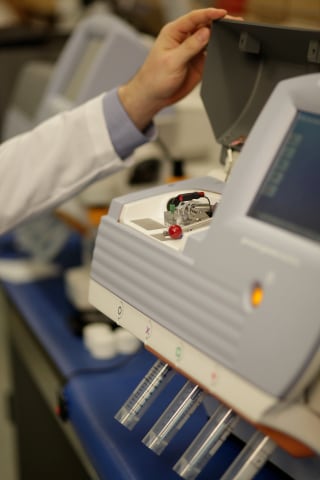The firm has partnered with the US Department of Agriculture’s Agricultural Research Service (USDA-ARS) and Pennsylvania State University (Penn State) to provide genetic testing tools to the food industry for E. coli detection in meat products.
E. coli strains housed at USDA-ARS and Penn State will be available to Thermo Fisher scientists for genetic analysis and development of rapid DNA-based kits for commercial distribution to food testing laboratories.
DNA from 200 strains will be sequenced using Thermo Fisher’s Life Technologies Ion Personal Genome Machine (PGM) as part of the three year project which started recently.
The firm is also developing a survey for people who are looking at E.coli to analyse market needs.
Tests using PCR or NGS
Commercial tests will be developed on multiple Life Technologies brand platforms, using next generation sequencing (NGS) or PCR-based technology.

Amanda Manolis, global product manager for food safety solutions at Thermo Fisher Scientific, said at the moment the number of targets you want to identify decides if the test can be done with PCR.
“If the target is known it is more economical and faster but it is a novel strain (e.g. the E.coli O104 outbreak in Germany in 2011) it needs to be sequenced to use the information for the design of robust assays,” she told FoodQualityNews.com.
“Whether it is PCR or molecular-based will depend on the customer and what the user is doing with the technology, is it a research institute, government body or for commercial use?
“It is important to have the broadest range of samples and isolates to provide robust assays to meet industry demand.”
She said that the analysis area needs more work in parts but with agencies such as the FDA using NGS it will get easier.
“The analysis with bioinformatics needs work after the sequencing but it will at some point get easier as more labs use the technology and it will become a level playing field.”
Molecular methods growth
The aim is to design molecular seroytyping and molecular specific tests that can be for any products for human consumption, environmental products or animal food.
Pina M. Fratamico, a researcher with USDA-ARS, said molecular technologies for rapid detection, typing, identification and characterisation of pathogens represent a ‘paradigm shift’ for industry.
“The current collaboration will lead us to a much higher resolution understanding of E. coli genetics, as well as highly specific and sensitive methods for detecting pathogenic strains, resulting ultimately in a safer food supply.”
It is not the first time the parties have worked together, as Life Technologies received a Letter of No Objection from USDA-FSIS for its RapidFinder STEC (Shiga-toxin producing Escherichia coli) Detection system at the start of 2012.
It was developed with the USDA, to provide meat producers a validated test that detects the presence of multiple strains of E. coli in raw beef in 10 hours.
Partnership benefits
Manolis said the partnership will ensure the best use of information and knowledge.
She gave examples of other partnerships between industry, regulatory agencies and research institutes including the 100k genome project involving the University of California, Davis, the FDA's Center for Food Safety and Applied Nutrition and Agilent Technologies.
“Molecular technology and assays are specific and precise and can be modified for new novel strains that come about and to check their virulence.
“Modifications need to be made to serve industry, immunoassay and culture based methods suffer from a lack of specificity.”
“We as an industry has used culture methods for 120 years and today’s technology shows the innovation and power around molecular and multi-plex capability to serve the customer as time is money.”
PFGE typing is still the ‘gold standard in most regions’ but it is not as accurate as molecular methods and can take one week to get an answer, said Manolis.
“There are many collaborations around the world to move forward and replace PFGE and when the regulations are adapted I can see it replacing PFGE in the near future,” she added.
As a first milestone, USDA scientists will submit the DNA sequence information for roughly 58 E. coli strains in GenBank, the public repository of genetic data maintained by the National Institute of Health’s National Center for Biotechnology Information.
These 58 strains represent part of a complete data set of 200 E. coli O-type sequences the USDA-ARS will submit, including the six non-0157 strains for which USDA proposed testing in 2011.
Chobi DebRoy, director of the E. coli Reference Center at Penn State, said: “Genetic assays that can accurately, rapidly and cost effectively detect pathogenic strains will prevent disease and reduce the economic burden associated with foodborne disease outbreaks.”
